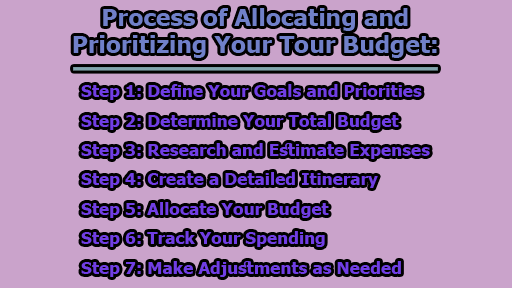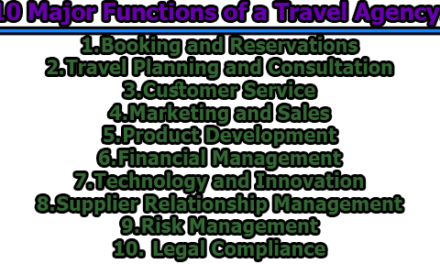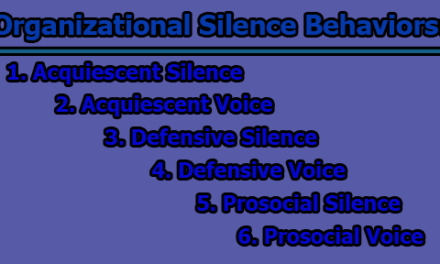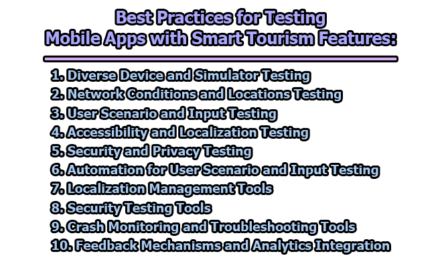Process of Allocating and Prioritizing Your Tour Budget:
Planning a tour can be an exciting yet challenging task, and one of the most critical aspects of this process is budgeting. Allocating and prioritizing your tour budget requires careful consideration to ensure that you get the most out of your trip without overspending. Whether you’re planning a solo adventure, a family vacation, or a group excursion, a well-thought-out budget can help you make the most of your resources while enjoying the experience to the fullest. In this article, we will walk you through the process of allocating and prioritizing your tour budget, providing you with the knowledge and tools you need to plan a memorable and financially responsible trip.
Step 1: Define Your Goals and Priorities: Before diving into the budgeting process, it’s crucial to clarify your goals and priorities for the tour. What kind of experience are you looking for, and what are your must-haves and nice-to-haves? This initial step will set the tone for your entire budgeting process. Here are a few questions to consider:
- Destination: Where do you want to go, and what experiences do you want to have in that location?
- Duration: How long do you plan to stay? The length of your trip will greatly impact your budget.
- Accommodation: Are you looking for luxury hotels, budget-friendly hostels, or alternative accommodations like Airbnb?
- Activities: What are the activities or excursions you absolutely want to do during your trip?
- Dining: Are you open to trying local street food, or do you prefer fine dining?
Understanding your priorities will help you make informed decisions throughout the budgeting process.
Step 2: Determine Your Total Budget: Once you have a clear understanding of your goals and priorities, it’s time to determine your total budget for the trip. Your total budget should be based on your available financial resources. Take into account your savings, income, and any additional funding sources like gifts, bonuses, or travel rewards. To create a realistic budget, consider the following factors:
- Fixed Expenses: These are expenses that don’t change, such as rent or mortgage payments, insurance, and monthly bills. Deduct these from your total available funds.
- Emergency Fund: It’s essential to have an emergency fund for unexpected expenses during your tour. Set aside a portion of your budget for this purpose, typically around 10-20% of your total budget.
- Tour Expenses: Allocate a specific amount to cover tour-related expenses, such as transportation, accommodation, food, activities, and souvenirs.
- Contingency: Allow for some flexibility in your budget by including a contingency fund. This can be around 5-10% of your total budget and will come in handy if you underestimate certain expenses.
By calculating your total budget, you’ll have a clear picture of how much you can spend on your tour without compromising your financial stability.
Step 3: Research and Estimate Expenses: Once you have a total budget in mind, it’s time to break it down into specific expenses. Research is key in this step. You need to estimate the costs associated with your tour by considering various factors.
- Transportation: Research transportation options to your destination, whether it’s by air, train, bus, or car. Consider the cost of tickets, fuel, rental cars, and any additional fees like baggage charges. Keep in mind that prices can vary depending on the time of year, booking in advance, and the duration of your stay.
- Accommodation: Look into various accommodation options and estimate their nightly rates. Depending on your priorities, you might choose hotels, hostels, guesthouses, or vacation rentals. Don’t forget to consider factors like location, amenities, and the number of nights you’ll be staying.
- Food and Dining: Research the cost of food at your destination. Consider whether you’ll be dining out frequently, cooking your meals, or a combination of both. Factor in the cost of groceries, dining at restaurants, street food, and beverages.
- Activities and Excursions: Make a list of the activities and excursions you’d like to experience during your tour. Research their costs, including admission fees, guided tours, and equipment rental. Prioritize the activities based on your preferences and interests.
- Miscellaneous Expenses: Account for miscellaneous expenses such as transportation within the destination, visas, travel insurance, and souvenirs.
- Exchange Rates and Currency Fluctuations: Be aware of exchange rates and potential currency fluctuations, as they can significantly impact your budget. Consider using a currency converter app to help you stay updated on rates.
- Travel Discounts and Promotions: Keep an eye out for travel discounts, promotions, and special deals offered by airlines, hotels, and tour operators. These can help you save money on your trip.
Step 4: Create a Detailed Itinerary: With a clear understanding of your expenses, it’s time to create a detailed itinerary for your tour. This itinerary should outline the specifics of your trip, including dates, destinations, activities, and accommodations. By having a well-organized itinerary, you can make more informed decisions about where to allocate your budget. When creating your itinerary, consider the following:
- Dates: Determine the exact dates of your trip, including the arrival and departure dates.
- Accommodations: Specify where you’ll be staying each night of your trip. Be sure to include the names of the hotels or rental properties, along with their nightly rates.
- Activities: List the activities and excursions you plan to do each day. Include any associated costs.
- Dining: Indicate where and what you plan to eat for each meal. Consider budget-friendly options for some meals and splurge on others, depending on your priorities.
- Transportation: Include the mode of transportation for each leg of your journey, along with estimated costs.
- Free Time: Allow some free time in your itinerary for spontaneity and exploration.
- Contingency Plan: Have a contingency plan for unexpected events, such as weather-related cancellations or illness. Allocate a portion of your budget for this purpose.
A detailed itinerary not only helps you manage your budget but also ensures that you make the most of your tour by having a well-structured plan.
Step 5: Allocate Your Budget: Now that you have a clear picture of your expenses and a detailed itinerary, it’s time to allocate your budget to different categories. The key is to match your priorities and goals with your available funds. Here’s how to do it:
- Prioritize Key Expenses: Start by allocating funds to your must-have expenses, such as transportation and accommodation. These are the non-negotiable elements of your tour, and you should ensure that you have enough budgeted for them.
- Allocate to Activities and Excursions: Based on your itinerary, distribute your budget among the activities and excursions you want to experience. Prioritize the ones that matter most to you and allocate more funds to them.
- Dining Budget: Determine how much you’re willing to spend on food. This can vary depending on your preferences. Some travelers enjoy sampling local street food, while others prefer dining at fine restaurants.
- Miscellaneous Expenses: Budget for miscellaneous expenses such as visas, travel insurance, and souvenirs. These should be planned for but not at the expense of your essential expenses.
- Contingency Fund: Ensure you have a contingency fund for unexpected expenses. It’s essential to have a safety net in case things don’t go as planned.
- Save for the Future: Remember to set aside some money for future needs or savings. Don’t deplete all your funds on your trip; always consider your financial well-being beyond the tour.
- Monitor Currency Exchange: Keep an eye on exchange rates as you allocate funds. Exchange some currency before your trip and keep track of exchange rates during your tour.
- Be Realistic: While it’s important to prioritize your goals, be realistic about your budget. Avoid overspending on non-essential items.
Step 6: Track Your Spending: Budgeting isn’t a one-time task; it’s an ongoing process that requires diligent monitoring of your expenses during your tour. Here are some tips for tracking your spending:
- Use Budgeting Apps: There are various budgeting apps and tools that can help you track your expenses on the go. Many of them allow you to categorize your spending, set spending limits, and receive alerts when you’re close to your limits.
- Keep All Receipts: Save all your receipts, whether digital or paper. This will help you maintain an accurate record of your expenses.
- Review Your Budget: Periodically review your budget to ensure you’re staying on track. If you overspend in one category, adjust your spending in another category to compensate.
- Avoid Impulse Purchases: Be mindful of impulse purchases. If you come across an unexpected expense, consider whether it aligns with your priorities before making the purchase.
- Document All Expenses: Record all your expenses, even the small ones. It’s easy to overlook minor purchases, but they can add up over time.
- Share Expenses: If you’re traveling with others, consider sharing expenses to save money. This can apply to accommodations, transportation, and dining.
Step 7: Make Adjustments as Needed: Flexibility is essential when it comes to budgeting for a tour. As your trip unfolds, you may encounter unexpected expenses or opportunities that require adjustments to your budget. Here are some ways to make adjustments:
- Reallocate Funds: If you discover that one expense category is less costly than anticipated, you can reallocate those funds to other categories or save them for future use.
- Cut Back on Non-Essentials: If you’re running low on funds, consider cutting back on non-essential expenses like souvenirs or expensive dining experiences.
- Tap into Your Contingency Fund: In the event of an unexpected expense, use your contingency fund to cover the cost. Just be sure to replenish it when you can.
- Explore Cost-Saving Options: Look for cost-saving options while on your trip, such as using public transportation instead of taxis or eating at local, budget-friendly eateries.
- Monitor Exchange Rates: Keep an eye on currency exchange rates and adjust your spending accordingly. Favorable exchange rates may allow you to indulge in certain activities or dining experiences.
In conclusion, budgeting for your tour is a critical step in ensuring a successful and enjoyable travel experience. By defining your goals and priorities, estimating expenses, creating a detailed itinerary, and allocating your budget wisely, you can make the most of your financial resources. Remember to track your spending, make adjustments as needed, and maintain flexibility throughout your journey. With careful planning and financial discipline, you can embark on your tour with confidence, knowing that you’re getting the most value for your money while creating lasting memories.

Assistant Teacher at Zinzira Pir Mohammad Pilot School and College










